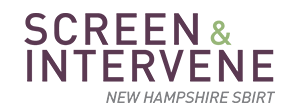Referral to Treatment
OVERVIEW
In the context of S·BI·RT, referral to treatment is shorthand for a well-planned process through which a healthcare professional provides an active referral to behavioral health resources. Referrals may be made within or outside of the provider’s organization for evaluation and diagnosis, and in some cases to external specialty treatment, depending on available resources and patient needs. It is critical that patients indicate a willingness/desire for such services during the brief intervention conversation. Whether the process includes internal behavioral health providers and/or external specialty referral sources, an established relationship, referral protocol, and family involvement are key components to successful referral.
| Purpose of Play 7 |
|
| Definitions | Active Referrals Managing the referral process and ensuring that the patient receives the necessary chronic disease management and follow-up support is critical to the recovery process.Internal Behavioral Health Providers Warm Handoff Practices with behavioral health practitioners available on-site through co-located or integrated service provision can create a flow that incorporates a warm handoff. This approach, which includes a physical provider-to-provider introduction, increases the likelihood of participation by the youth and family in further assessment, motivational counseling, or brief treatment. In some cases, patients may require a treatment option that is not available on-site,triggering referral to a higher level of care. Depending on flow decisions, integrated behavioral health staff may also be responsible for evaluation, diagnosis, and external referrals to specialty care.External Substance Use Disorder Specialists Established Relationships and Protocols Efficient and successful referral to external specialty care requires relationships with specialty providers, and mechanisms for sharing patient information. This may require establishing and cultivating relationships with specialty providers for all levels of care. Establishing release of information mechanisms in anticipation of sharing and receiving pertinent patient information with the referral provider prior to the need to refer a patient will facilitate the process. Parent and Family Involvement |
| Team members |
|
| Measure(s) |
|
Recommended Approach
- Create opportunities in the flow for warm handoffs.
- Identify and develop referral resource relationships to facilitate successful referrals for youth.
- Discussion/training as to how to approach and discuss the need for referral to youth and their parent/family as appropriate.
Keep In Mind
- The NH Alcohol and Drug Treatment Locator (Appendix L) provides contact information for treatment providers including location, level of care, and type(s) of payment accepted. The Treatment Locator is also searchable by those domains.
- The NH Addiction Crisis Line (1-844-711-HELP (4357)) (Appendix M) is available to assist providers and patients identifying treatment and recovery resources.
- Core competency recommendations for masters-level licensed behavioral health counselors, endorsed by the NH Governor’s Commission on Alcohol and other Drug Abuse Prevention, Treatment, and Recovery, are available in Appendix N.
- Information regarding community supports such as Alcoholics Anonymous and Narcotics Anonymous should be readily available at your site. However, youth meetings are not widely available in NH at this time; these resources are often more appropriate for those over 18 years of age.
- The Family Resource Center website is a directory of scientifically validated or informed resources that have been vetted by the Treatment Research Institute with funding from the National Institutes of Health.
- Training and consultation is available to prepare your practice to identify which patients need referrals, and to connect patients to appropriate resources.
- Information on the Release of Information during a referral for Substance Use Disorder and a sample release is available in Appendix O.
- The DSM-V Substance Use Disorder Diagnosis Overview is available in Appendix P.
Corresponding Appendix Section(s)
Appendix L – NH Alcohol and Drug Treatment Locator
Appendix M – NH Addiction Crisis Line
Appendix N – Core Competencies for Licensed Behavioral Health Counselors
Appendix O – Release of Information Example
Appendix P – DSM-V Substance Use Disorder Diagnosis Overview
